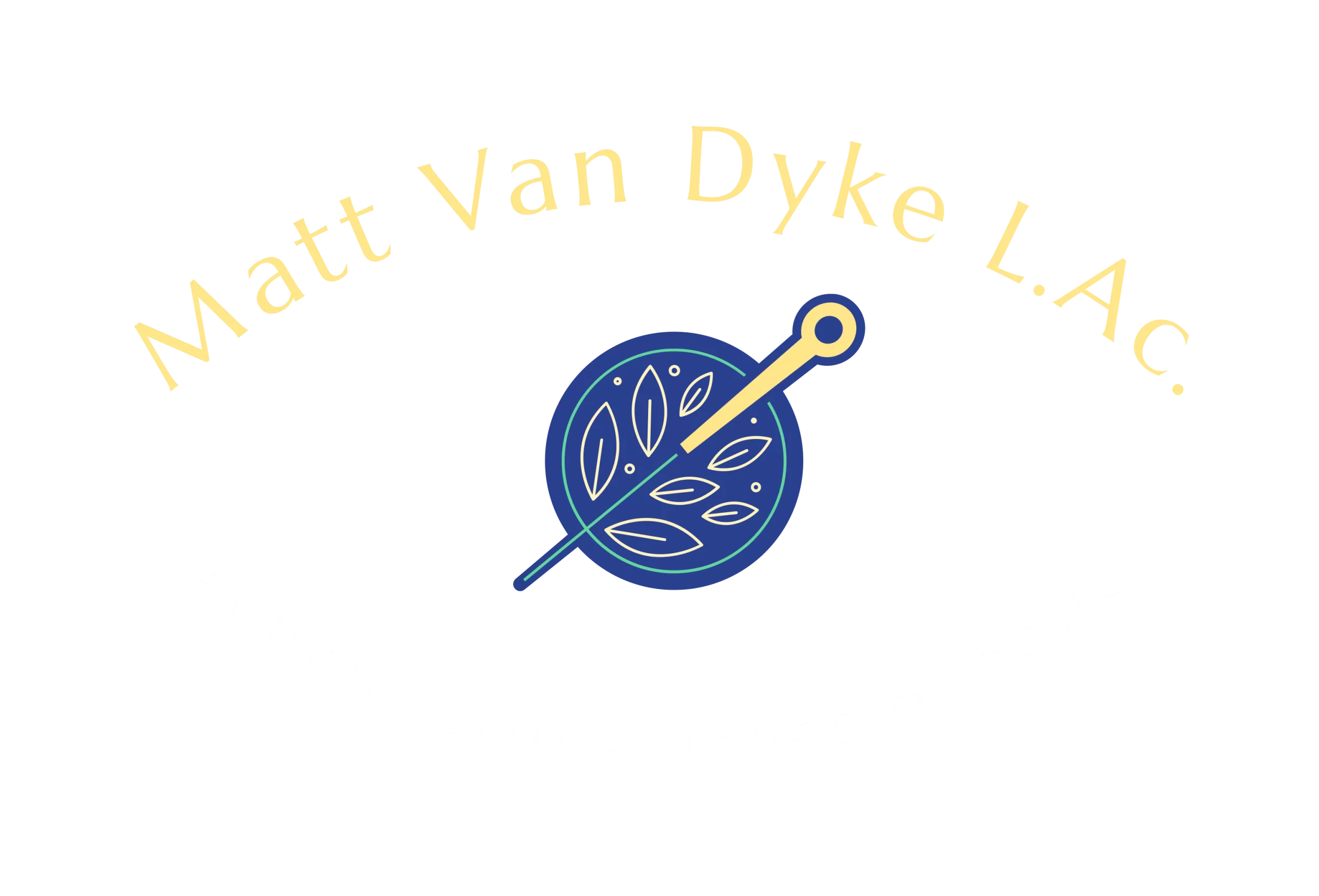-
 Matt Van Dyke, L.Ac. EAMP1405 Fraser St. # 1
Matt Van Dyke, L.Ac. EAMP1405 Fraser St. # 1
Bellingham, WA 98229(360) 466-1800 - Testimonials
Matt is a compassionate healer and truly cares for his patients. He’s thorough to figure out the issues affecting you and goes out of his way to provide the best treatment at each session. He communicates well to understand the underlying issues. He helped me with my Covid vaccine side effects and helped my body to recover. I appreciate all that he’s done for me. It’s too bad that I am leaving B’ham and I hope to find another healer
... Read more »I have been seeing Matt for a couple of months now , since my episode with COVID-19. I have been working on a strange side-effect that had to do with the movement of my right foot. Every visit has been uplifting with progress that I’m sure wouldn’t have been as obvious as it is when I get home after a treatment with Matt. I never knew that acupuncture could yield such dramatic results. Matt is very personable in his approach
... Read more »Matt combines knowledge, experience, professionalism, humility and genuine caring to greatly assist in the restoration and maintenance of health. His clinic is orderly, comfortable and clean! Matt doesn’t rush anything, asking thoughtful questions and he listens with his full focus. Matt is gentle in technique and spirit, and interacting with him is, in itself, calming. His acupuncture treatments have helped my chronic low back pain a lot!
Doug – Ferndale, WA
I feel fortunate to have found Matt and his services. He is very knowledgeable and caring. I see him for acupuncture and herbal support. I have had 2 surgeries in the last year and felt pretty out of whack. Since the treatments started I can sleep 6-7 hours without waking up…which is kind of a miracle for me, especially since one of the reasons for waking up after 3 or so hours was bladder urge. It feels like things are
... Read more »After years of struggling with significant and debilitating lack of energy and trying what felt like everything under the sun with little success, I am back not only to my old self, but to my younger self as well! This after only a little more than a month receiving acupuncture treatments and recently starting Golden Shield Qigong. Matt applies his deep knowledge of Chinese medicine with skill and most importantly, from the heart – a true healer! I am grateful
... Read more » - Sign up to receive news and updates and get my free report:“The Top 10 Reasons to Try Acupuncture”

-
Latest Articles:
- • Add These 10 Immune-Boosting Foods to Your Fall Diet •
- • Keep Your Skin Healthy and Glowing with these Fall Skincare Tips •
- • Beat End of Year Burnout with these Fall Self-Care Rituals •
Traditional Chinese Medicine
Benefits of Acupuncture in a Palliative Care Setting

People entering a hospice or palliative care setting bring with them a host of symptoms and emotions and often a multidisciplinary team of doctors and care providers. Research has shown that the addition of an acupuncturist to the hospice team can be effective and impactful at providing maximum comfort and improve quality of life. continue reading
Three Things to Know About Acupuncture & Herbal Medicine

Acupuncture and herbal medicine often go hand-in-hand. Herbal medicine is often used in conjunction with acupuncture, as appropriate, to support the body’s healing process. Just like a traditional medical prescription, herbs are prescribed by Oriental Medicine practitioners to address a variety of health concerns. They are often prescribed as formulas rather than specific individual herbs and are tailored to the needs of the patient. And just like traditional prescription medicine, herbs are adjusted as the patient’s needs change. Some Western hospitals are now utilizing Chinese herbs in their treatment protocols. For example, the Cleveland Clinic has a licensed and certified Chinese herbalist on staff. continue reading
Establishing Care with Your Acupuncture Practitioner

Acupuncture has a proven track record of success but if you haven’t yet added acupuncture to your health care routine, then it’s important to note that your experience will greatly depend on the acupuncture provider you ultimately choose. And the best way to determine the right acupuncturist for you is to identify your specific health care needs and goals. It makes sense, right; when we like and trust our health care providers, our experiences tend to be more positive. And trusting a provider is easier when you know they have the proper training and credentials to address your specific needs.
And if you are here on this website, you already have this goal in mind. Different states and jurisdictions have different training and educational requirements. Don’t hesitate to ask about training, specialties, or advanced education. We want you to be confident in our care. continue reading
How Kids Can Benefit from Regular Acupuncture Treatments

It’s becoming more and more common for parents to look for natural and effective treatment options to deal with childhood health concerns. Acupuncture is a great option for those looking to keep the whole family healthy in both mind and body. It really doesn’t matter how old you are, young or old, families can benefit greatly from regular acupuncture treatments. continue reading
Acupuncture Meridians and Qi Explained

If you are just beginning to look into acupuncture, you will be exposed to language you probably aren’t familiar with. One of the first phrases you might come across is the term “meridian.” Meridians are defined as the invisible channels through which qi (or energy) circulates throughout the body. The acupuncture points are the locations where the qi of the channels rises close to the surface of the body. continue reading

